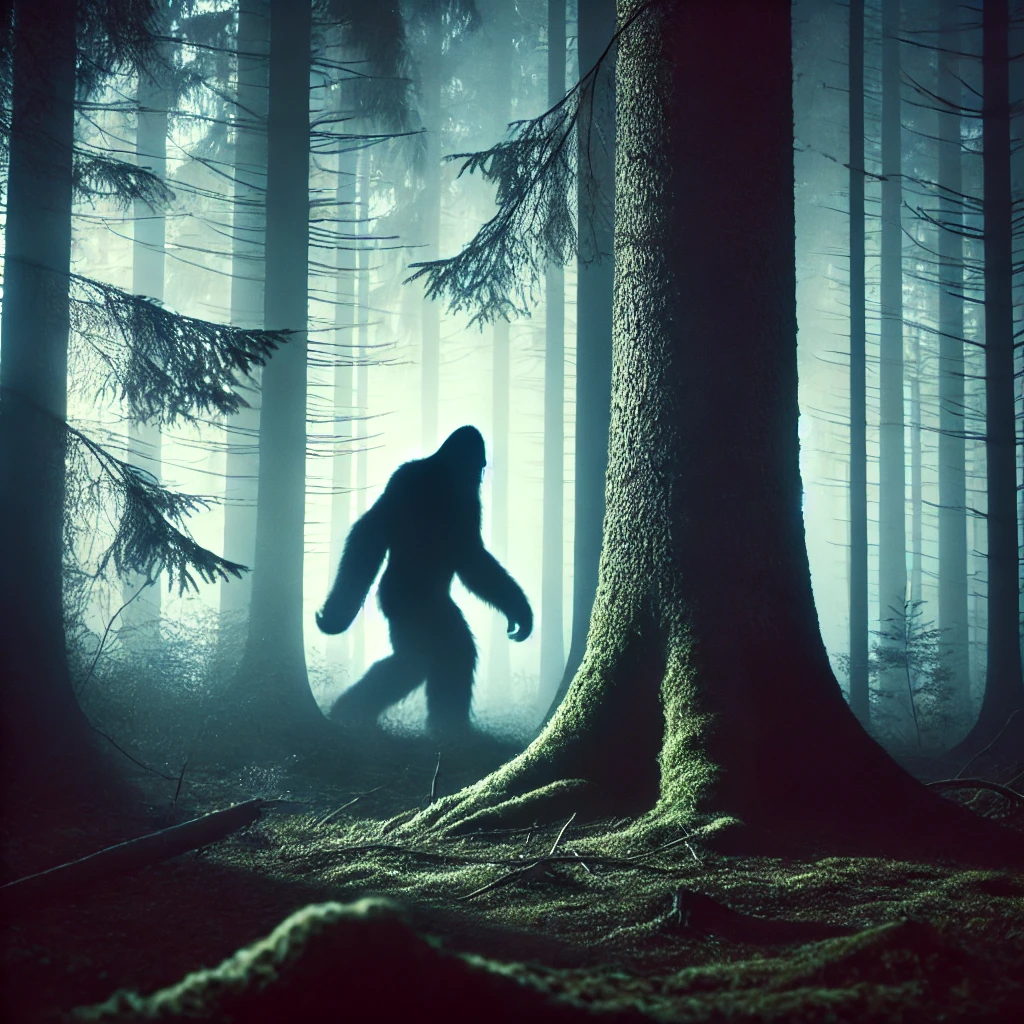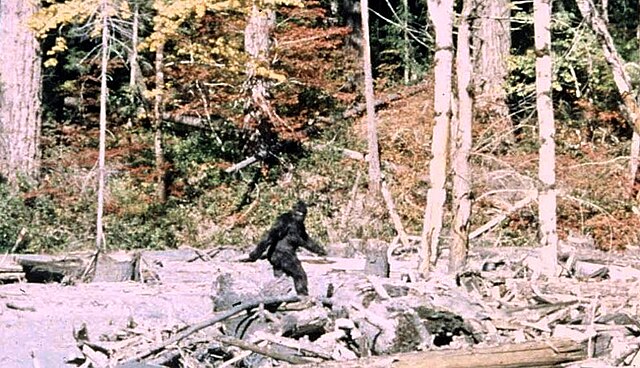When it comes to elusive creatures in the wilderness, Bigfoot reigns supreme. Whether you believe in the creature or not, the fascination surrounding Bigfoot (or Sasquatch) has captivated outdoor enthusiasts for decades. While the idea of a Bigfoot hunt is mostly shrouded in folklore, the legend of this mysterious creature continues to fuel imaginations across the world. This article will explore the history of Bigfoot, the most common areas for sightings, the legends surrounding this cryptid, and, for the adventurous, how one might go about a Bigfoot “hunt.”
Photo Credit: Free-Range Aoudad Package / Brady / Texas
The History of Bigfoot
The Bigfoot legend stretches back centuries, with stories of large, ape-like creatures in the forests of North America passed down through generations. Indigenous peoples have long told tales of mysterious, hairy giants living in the woods. In fact, the term “Sasquatch” is derived from the word “Sésquac,” meaning “wild man” in the language of the Coast Salish people of the Pacific Northwest.
The modern Bigfoot phenomenon took off in the 20th century with a famous 1958 article in the Humboldt Times in Northern California, which reported large footprints found in the region. This story triggered a wave of fascination, leading to what is now a global cryptid obsession. Since then, countless individuals have claimed to encounter Bigfoot, contributing to a modern myth that blends the boundary between folklore and potential reality.
Photo Credit: Free Range Aoudad Hunt / Alpine / Texas
Bigfoot Sightings: Where the Creature Roams
Bigfoot sightings have been reported in various regions, but some hotspots seem to draw more attention than others. The Pacific Northwest (Washington, Oregon, Northern California) is the epicenter of Sasquatch lore. This region, with its vast, dense forests and rugged terrain, provides the perfect backdrop for such a mysterious creature to hide.
Other popular Bigfoot sighting areas include:
- The Appalachian Mountains: Particularly in West Virginia and Pennsylvania.
- The Rocky Mountains: Colorado, Wyoming, and Montana have their share of reports.
- The Great Lakes Region: Especially Ohio and Michigan.
- The Southeastern U.S.: States like Florida (where the creature is known as the “Skunk Ape”) and Georgia.
These areas are not only vast and remote but offer the ideal ecosystems for a creature like Bigfoot, filled with deep forests, ample water sources, and plentiful wildlife for food.
“Get out in the woods. That’s where the cryptids are. Keep your eyes peeled. Know that you’re probably not going to see something for a long time. The more you’re out there though, the more likely you’ll see something. And don’t lose faith just because you don’t see something. It might take some time, so be patient.”
Legends and Theories: What’s Behind the Myth?
Over the years, countless stories have fueled the legend of Bigfoot. Some believe that Bigfoot is a surviving species of Gigantopithecus, an extinct giant ape, while others think it’s more supernatural, connecting the creature to alien sightings or time travelers. There are also those who argue that Bigfoot is an undiscovered species of primate that has somehow managed to avoid scientific detection.
Legends abound about the creature’s supposed abilities. Bigfoot is often said to be extremely intelligent, able to avoid human detection through superior camouflage or even mental abilities. Some hunters and explorers have shared tales of hearing loud, guttural howls in the night, of strange tree structures in the woods that seem unnatural, and of massive footprints leading into the wilderness—only to disappear without a trace.
How to Hunt Bigfoot
While hunting Bigfoot is more a pursuit of intrigue and adventure than a serious endeavor, the idea of tracking this creature has captivated many. But, how would one go about it?
Gear and Tools
Since Bigfoot sightings often take place in remote and rugged terrain, preparation is key. The following tools could prove helpful:
- Game cameras: Often used in traditional hunts, these cameras allow hunters to capture movement and images without alerting wildlife.
- Recording devices: Many Bigfoot hunters use audio equipment to capture vocalizations that are attributed to the creature.
- Night vision and thermal optics: If Bigfoot exists, it likely operates under the cover of darkness.
- Footprint casting kits: For enthusiasts seeking physical evidence, plaster kits allow hunters to take casts of any strange footprints they may encounter.
General Hunt Preparation
If you’re planning a Bigfoot “hunt,” preparing like you would for any backcountry expedition is essential. Here are some basic steps:
- Fitness and endurance: Bigfoot hunting often takes place in remote and rugged areas. Training for stamina and strength, similar to preparing for an elk hunt, is recommended.
- Survival skills: Since you may spend extended periods in the wilderness, knowing how to navigate, build shelter, and find water is crucial.
- Campsite readiness: Bring adequate camping gear for long periods outdoors, including tents, food storage, and water filtration systems.
- First aid knowledge: Since you’re likely to be deep in the wilderness, carrying a first-aid kit and knowing how to use it is essential.
Bigfoot Hunting Techniques
1. Tracking: Bigfoot “hunters” often employ techniques used in tracking large game. This includes looking for broken branches, unusual markings, or large, humanoid footprints in soft ground.
2. Calling: Some hunters use vocalizations or wood knocking—loudly banging sticks on trees—to try and communicate with the creature, hoping to get a response.
3. Stakeouts: Setting up camp in Bigfoot sighting hotspots with game cameras and recording devices is a common approach. Patience is crucial as it can take days or even weeks to capture any potential evidence.

Ethics of the Hunt
Many enthusiasts prefer a “no-kill” approach, treating Bigfoot hunting more like a wildlife photography expedition, where the goal is to document rather than harm the creature. Conservation-minded individuals argue that, if Bigfoot exists, it may be an endangered species, making its protection paramount.
Resources for Bigfoot Hunters
For those looking to dive deeper into the mystery of Bigfoot, there are several resources and organizations dedicated to researching the creature. Some of the most popular include:
-
- The Bigfoot Field Researchers Organization (BFRO): The BFRO is the oldest and largest organization of its kind, dedicated to documenting Bigfoot sightings and promoting research.
- North American Wood Ape Conservancy: Focused on researching the possible existence of Bigfoot, particularly in the Southern U.S.
- Sasquatch Chronicles Podcast: A popular podcast where individuals share their experiences and encounters with Bigfoot.
- Books:
- Sasquatch: Legend Meets Science by Jeff Meldrum, Ph.D. — Offers a scientific perspective on the possibility of Bigfoot’s existence.
- The Bigfoot Book: The Encyclopedia of Sasquatch, Yeti and Cryptid Primates by Nick Redfern — A detailed guide to Bigfoot and related cryptids.
Whether you approach Bigfoot hunting as a cryptid curiosity, a wild adventure, or a serious search for evidence, the pursuit offers an opportunity to explore some of North America’s most remote and stunning wilderness areas. With a rich history of legends and modern-day sightings, Bigfoot continues to captivate the imagination. Who knows? You might just become part of the legend yourself.
Ready to book a Bigfoot hunt?
Check out this package: Bigfoot Hunt Adventure in the Pacific Northwest




